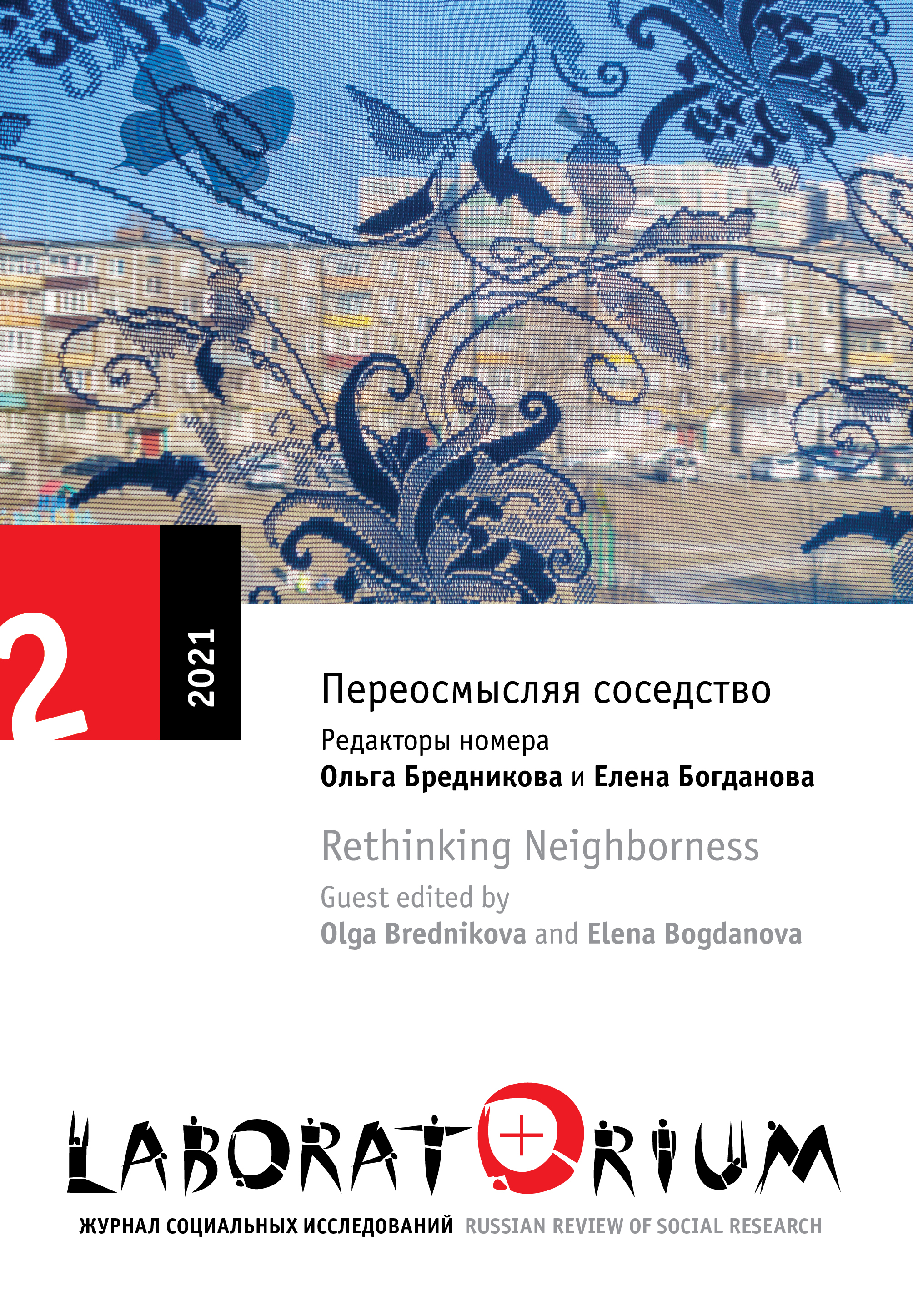Hybrid Neighborness in Action: The Case of Kudrovo, Russia
Main Article Content
Abstract
The article explores relationships among neighbors in the new housing developments of Kudrovo, a town bordering Saint Petersburg (Russia). Kudrovo is a vivid example of neighborness, a large part of which originates and happens online; however, it does not stay entirely on the internet but creates multiple offline activities and changes the materiality of the area. In Kudrovo I documented a large number of neighbors’ initiatives that contributed to security, town improvements, alternative economy, local identity formation, as well as leisure, educational, and other activities. Inspired by actor-network theory, the analysis pays attention to human and nonhuman actors with a focus on the roles of residents and digital infrastructure in these interactions. It is not face-toface interaction or short geographic distance between people that allows them to reach the highest potential of neighborness but the connectivity to the body of “hybrid neighborness”—a digital-human network that functions 24/7, unites thousands of local residents, keeps the history of all previous interactions, responds immediately, and can be easily appealed to in an incredible variety of situations from seeking moral support to helping with practicalities of life. Although this article presents some examples of particular networks and actors involved, and restrictions and strategies to bypass them, its main purpose is to show the features and potential of hybrid neighborness by demonstrating how it works in Kudrovo.
Article in English
Keywords
Hybridization, Neighborness, New Housing Developments, Human and Nonhuman Actors, Digital Infrastructure, Practices of Sharing
Abstract 311 | PDF Downloads 269


